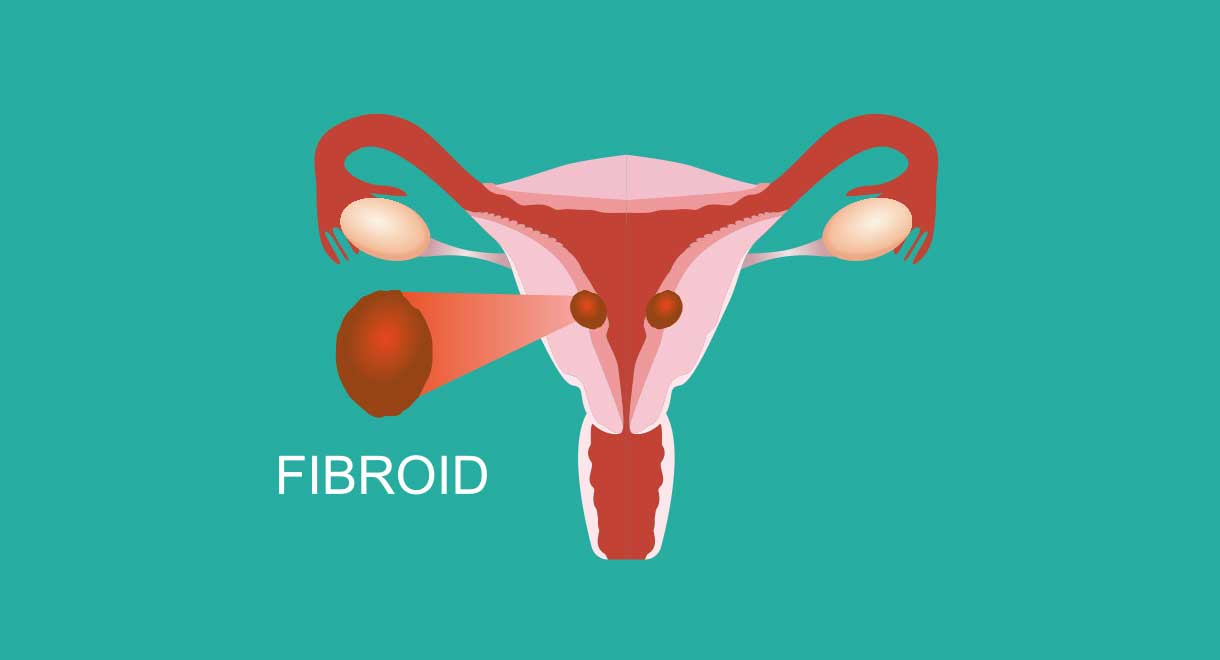Fibroids
Fibroids are benign tumors of the uterus made up of muscle and fibrous tissue. They may be single or multiple and can sometimes reach a huge size. Fibroids may grow on the outside of the uterus, or inwards into the uterine cavity, and some will develop a stalk – pedunculated fibroids. They are quite common, particularly in women over 35 where it is reported that between 20 to 40 percent have uterine fibroids of significant size. Fibroids are sensitive to the effects of estrogen and will generally continue to slowly grow up until the time of the menopause, following which fibroids will normally shrink.
What are the symptoms?
In many cases, fibroids will cause no symptoms. However, they can result in heavy and prolonged menstrual bleeds, and sometimes lower abdominal pain, a sensation of fullness, or dragging feeling in the pelvis. If fibroids exert pressure on the bladder then painful and frequent urination may develop, while pressure on the bowel can cause backache and constipation.
How is it diagnosed?
Your doctor may diagnose fibroids on a pelvic examination. An ultrasound scan of the pelvis is another more accurate way of revealing fibroids.
What causes it?
Poor liver function can play a part in hormonal imbalances, resulting in conditions such as fibroids and endometriosis. Estrogen is dominant and there is a concurrent deficiency in progesterone. Vitamin D deficiency increases the risk of fibroids.
Treatment
Fibroids which are not causing any symptoms require no treatment. For women suffering heavy periods or pain, there are two main options.
- A hysterectomy (removal of the uterus) provides a permanent cure.
- In younger women who wish to have children or those who are fearful of a hysterectomy, an operation called a myomectomy can be performed. This is where the fibroids are ‘shelled out’, thereby conserving the uterus. It can be a difficult and tedious operation.
- Another procedure called endometrial ablation is sometimes suitable for small fibroids on the inner wall of the uterus. A small telescope (hysteroscope) is inserted through the cervix and the uterine lining removed by laser or cautery. This will help to stop or reduce heavy menstrual bleeding.
Raw juicing
The recommended juice recipe to assist with fibroids from the “Raw Juices Can Save Your Life” book is:
Endometriosis Juice
Ingredients
- 1 carrot
- 1/2 cup chopped wheatgrass
- 1 inch (2.5 cm) slice of fresh ginger
- 2 sprigs cilantro (coriander)
- 1/4 medium-sized pineapple
- 1 whole grapefruit with white pith
- 2 very dark green spinach or kale leaves
- 4 sprigs parsley
Method
- Wash, trim and chop ingredients. Remove rough, dry pieces from pineapple but retain some skin.
- Put all ingredients through juicer.
- Drink 1 cup, 2 to 3 times daily.
- Store covered in refrigerator up to 24 hours or freeze larger amounts in daily serving sizes.
Diet
- A diet high in legumes, raw nuts and seeds and sprouts should be followed. Eat only organic chicken.
- Avoid ALL dairy foods.
- Avoid deep fried foods and fatty processed foods.
- Avoid food containing added sugar.
- Avoid foods containing hormones, such as chicken and other poultry that is not certified organic.
Recommended supplements for fibroids
- Livatone Plus Powder or Livatone Plus Capsules
Take 1 teaspoon twice daily or 2 capsules daily with meals. A good formula will contain taurine, St Mary’s Thistle and B vitamins to help assist the liver to break down excess hormones such as estrogen. - Femmephase
Take 2 capsules twice daily with food – to help balance your hormones naturally. - Fem Pro – Natural Progesterone Cream
One dose = 1/2 turn of the self-dispensing lid = 1/4 teaspoon of the cream = 35 mg of progesterone. Women who may find benefit from the use of progesterone cream are those with heavy menstrual bleeding and endometriosis etc. - Vitamin D
Take 1 capsule daily with breakfast. Vitamin D deficiency increases the risk of fibroids and polyps.
The above statements have not been evaluated by the FDA and are not intended to diagnose, treat or cure any disease.


Leave A Comment